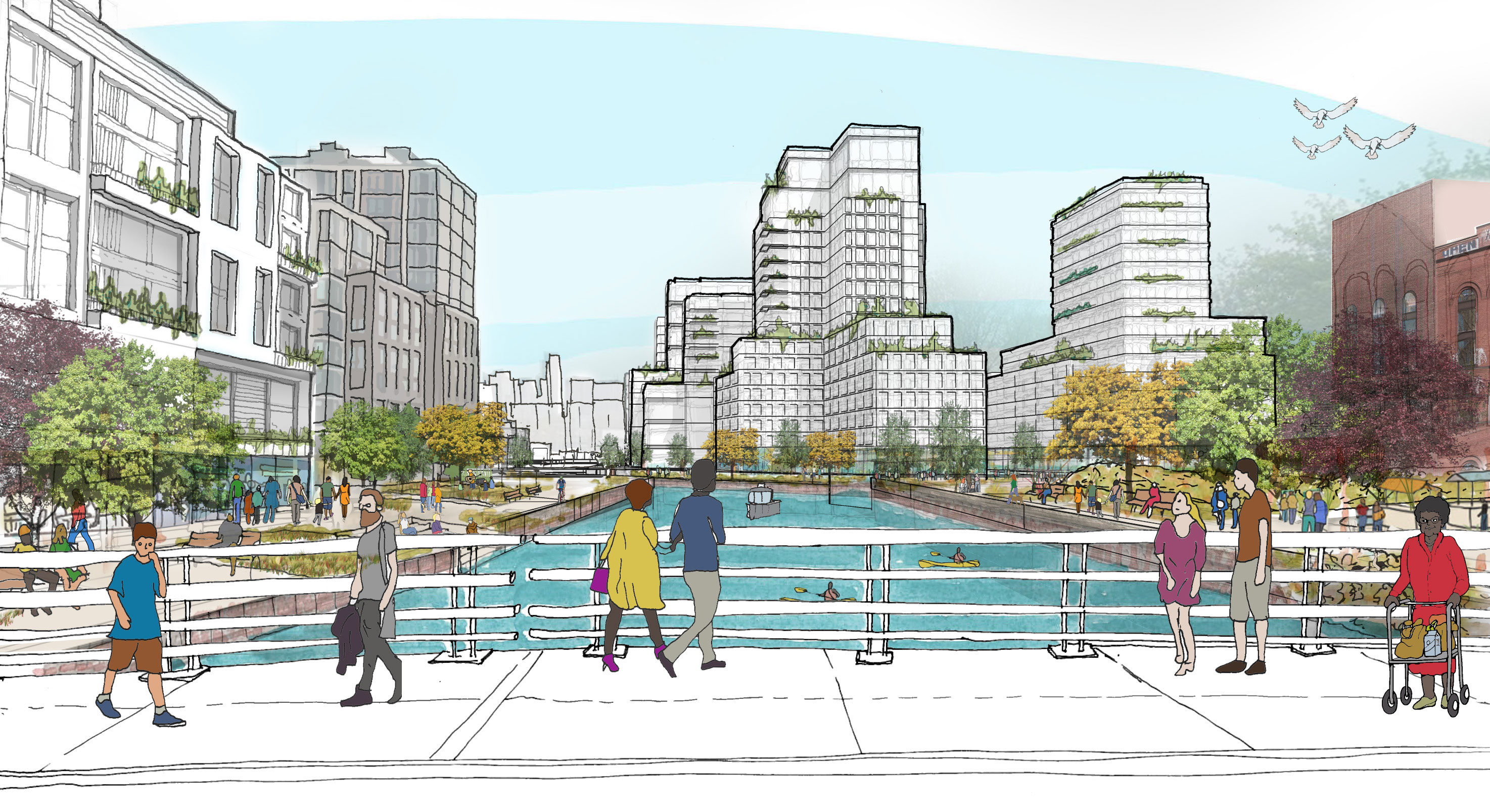Gowanus waterfront activists can learn from past rezoning failures

A presentation to the Community Board 6 Waterfront Committee last week showed a bold vision of a future Gowanus Canal: public spaces and on-water access, community gardens and rock climbing — and, of course, boat launches.
The March 20 presentation came courtesy of the Gowanus Dredgers, a canoe club that advocates for recreation and restoration of the Gowanus Canal. Now that the notoriously polluted waterway is in the center of a neighborhood rezoning, activists like the Dredgers are attempting to get ahead of the curve, laying out an expansive vision of what waterfront design could be in Brooklyn.
Owen Foote, a member of the Dredgers, said they wanted to avoid the city laying down the same underutilized waterfront esplanades from every previous project along the Gowanus and are instead advocating for “integrated waterfront service facilities,” ranging from boathouses and floating walkways to dining and public space.
